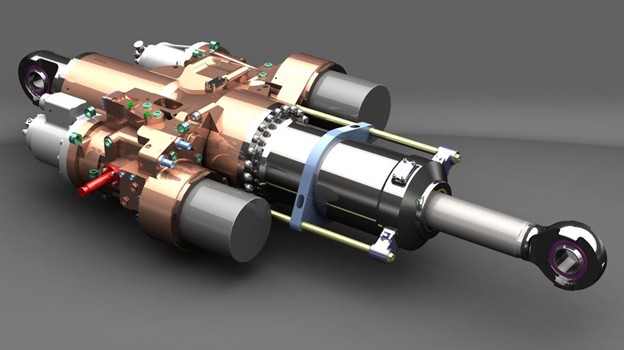Enhancing Flight Control: The Evolution of Aircraft Actuators
Flight control is a critical aspect of aircraft operations, ensuring the safe and precise maneuverability of an aircraft in various flight conditions. Over the years, significant advancements have been made in Aircraft Actuators, which play a pivotal role in controlling and manipulating the aircraft's flight surfaces. From the early mechanical linkages to the latest fly-by-wire systems, the evolution of actuators has revolutionized the aviation industry.
In the early days of aviation, mechanical linkages were used to transmit pilot inputs to the control surfaces. Cables, pulleys, and rods were employed to connect the pilot's control inputs to the flight surfaces. While effective, these mechanical systems had limitations in terms of response time and precision. They required considerable physical effort from the pilot and were susceptible to wear and fatigue.
The Aircraft Actuators Market was estimated to be worth US$ 8.37 billion. From 2022 to 2030, the market is expected to increase at a CAGR of 7.11%.
The advent of hydraulic actuators in the mid-20th century marked a significant leap forward in flight control technology. Hydraulic systems utilized fluid pressure to transmit control inputs, providing faster and more precise control of the aircraft. These actuators offered higher force capabilities, enabling larger and faster aircraft to be controlled with ease. However, hydraulic systems were complex, heavy, and prone to leaks and maintenance issues.
The digital revolution in the late 20th century brought about a paradigm shift in Aircraft Actuators systems with the introduction of fly-by-wire technology. Fly-by-wire systems replaced mechanical and hydraulic linkages with electronic interfaces, allowing for the transmission of control inputs via electrical signals. This innovation eliminated the need for heavy and complex mechanical components, reducing weight and enhancing aircraft performance.
Fly-by-wire systems paved the way for advanced actuators like electro-hydraulic actuators (EHA) and electro-mechanical actuators (EMA). EHAs combine the benefits of hydraulic and electrical systems, offering precise control while reducing weight and maintenance requirements. EMAs, on the other hand, use electric motors to directly drive the flight surfaces, providing even greater control accuracy and eliminating the need for hydraulic systems altogether.
The latest breakthrough in Aircraft Actuators systems is the adoption of smart actuators. These actuators incorporate advanced sensors, microprocessors, and artificial intelligence algorithms to enhance their performance and functionality. Smart actuators can monitor their own health, detect anomalies, and adapt their control characteristics accordingly. They provide real-time feedback to the flight control system, enabling predictive maintenance and improving aircraft safety and reliability.
Moreover, the integration of actuators with other aircraft systems, such as flight management and autopilot systems, has further enhanced flight control capabilities. This integration allows for more precise and coordinated control of multiple flight surfaces, optimizing aircraft maneuverability and fuel efficiency.
The evolution of Aircraft Actuators has been instrumental in enhancing flight control. From the mechanical linkages of the past to the advanced fly-by-wire systems and smart actuators of today, each generation of actuators has brought about significant improvements in aircraft performance, safety, and reliability. As technology continues to advance, we can expect further advancements in aircraft actuation systems, opening up new possibilities for the future of aviation.




Comments
Post a Comment